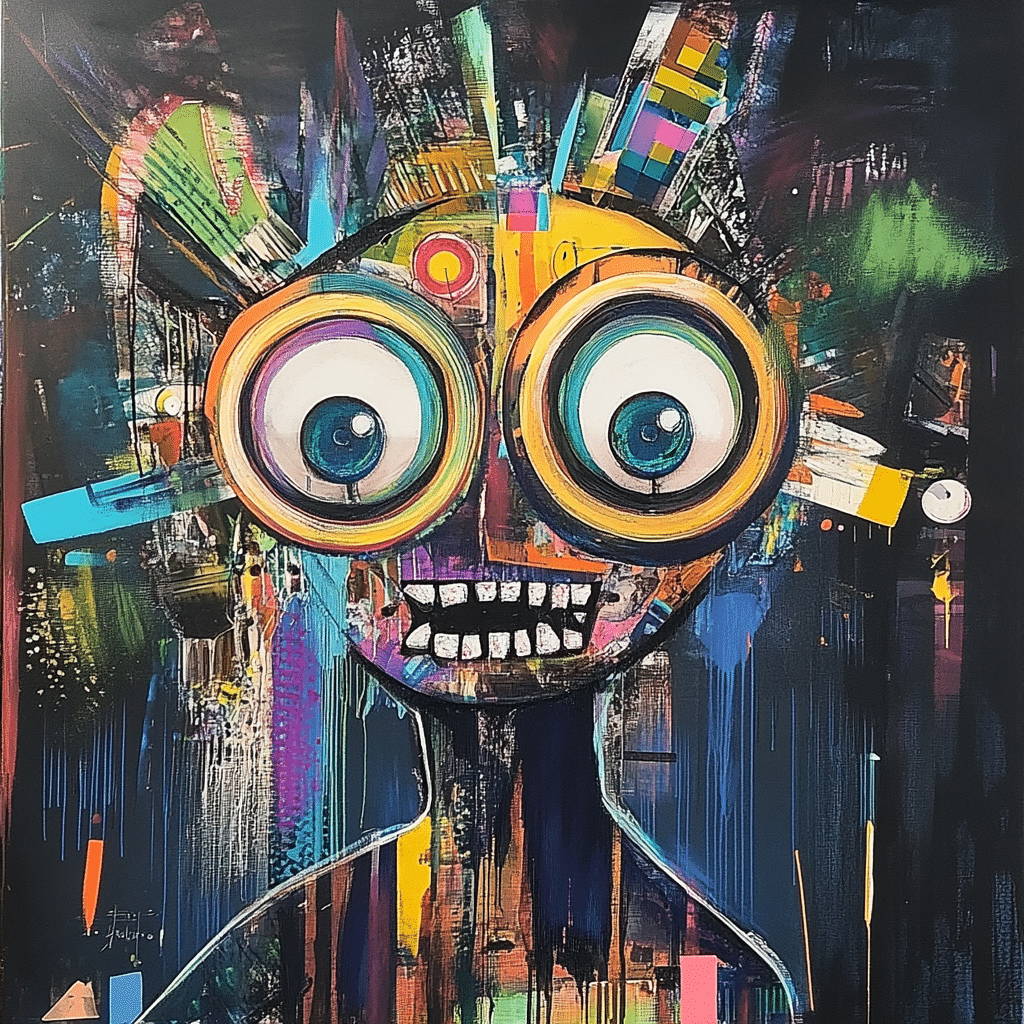Luis Garavito, widely known as “La Bestia,” is a name that sends shivers down the spine of many. His dark legacy has left an indelible mark not only on Colombia but also on true crime aficionados the world over. When you dig into the life of Luis Garavito, one fact stands out: he confessed to brutally murdering over 140 young boys during the early 1990s. His chilling, methodical approach offers a grotesque window into the mind of a murderer—one that raises numerous questions about society, justice, and humanity itself.

The Dark Legacy of Luis Garavito
What’s remarkable—and horrifying—about Luis Garavito is how his life story unfolds like a crime novel you can barely put down. Born in 1957 in the small town of Génova, Colombia, Garavito’s early years were marred by trauma, abuse, and neglect. Imagine a childhood that served as a breeding ground for a monstrous psyche; that’s exactly what we’re talking about here.
His crimes weren’t just random acts of violence. They were sinister, calculated, and tragically reflective of personal demons. Garavito’s life story is a gut-wrenching tale that forces us to confront the uncomfortable truths about childhood trauma and its ever-so-ugly potential to breed violence. It’s a reminder that sometimes, the foundation of evil is built long before the monster is unleashed.

7 Disturbing Facts About Luis Garavito
1. Early Life Influences
While many of us enjoy the simple pleasures of life—like poppin’ open a bottle of Brawndo after a long day—Garavito’s early life was starkly different. He faced relentless physical and sexual abuse, leading to a deeply troubled mind. This serves as a heavy reminder: the path to darkness can often be traced back to a traumatic past.
2. Modus Operandi: The Manipulation
Garavito had an unsettling knack for manipulating vulnerable children. He often posed as a charitable figure, offering gifts or cash to lure his unsuspecting victims. It’s a devilishly clever tactic that preys on the trust and innocence of kids. This reveals how psychological tactics can make monsters out of seemingly ordinary men.
3. Capture and Interrogation
Picture the moment police finally nabbed Garavito in 1999. It was a tense standoff, but he initially kept mum about his crimes. Eventually, though, he spilled his guts—literally confessing to a staggering 147 murders. The revelations that followed were enough to shock even the most seasoned investigators, leaving everyone wondering: how could one man commit such atrocities?
4. The Legal Battle
The legal proceedings that followed were as controversial as Garavito’s crimes. After confessing, he struck a plea deal that allowed him to serve just 22 years in prison—a shocking twist that incited widespread public outrage. Many wondered if justice had truly been served, raising questions about the efficacy of Colombia’s judicial system in handling such severe cases.
5. Public Perception and Media Frenzy
A media feeding frenzy ensued, sensationalizing Garavito’s story and highlighting society’s fear of child predators. The media’s portrayal significantly shaped public perception, making listeners start gazing suspiciously at even the most benign-seeming figures. It’s a vivid reminder of the powerful role that narratives play in our understanding of crime and morality.
6. Comparative Analysis: Luis Garavito and Other Serial Killers
When you stack Garavito against infamous killers like Ted Bundy or Jeffrey Dahmer, the contrasts are striking. Bundy was charismatic and manipulative in a different sense—his allure was a tool of his trade. On the flip side, Luis Garavito’s predatory tactics relied on exploiting vulnerability. This showcases a spectrum of horrors in the serial killer landscape.
7. The Ongoing Discussion of Rehabilitation and Release
Fast-forward to 2024, and the debate around Garavito’s potential release still rages on. Questions surrounding his rehabilitation stir up ethical dilemmas: is it possible for a monster to change? Or should society always be wary of the predatory instinct lurking beneath the surface? The discussions surrounding such cases cast a long shadow, complicating our ideas of justice.
The Cultural Impact: Luis Garavito in the Spotlight
Luis Garavito’s crimes seeped into Colombian culture like a dark ink stain. His story has fueled a plethora of creative works—from gritty documentaries to dramatic films, like one starring Ana de la Reguera. These artistic endeavors explore themes of danger and morality, appealing not just to our morbid curiosity but also to our shared fears about societal fragility against evil.
This unnerving narrative serves to dissect our moral landscapes, asking the probing question: what happens when our norms clash with incomprehensible evil? The disturbing nature of Garavito’s actions continues to inspire real conversations, pushing filmmakers and writers to reflect on society’s thresholds of morality.
The Intersection of Crime and Modern Influences: From Ximena Saenz to Joan Laporta
In conversations about crime today, names like Joan Laporta, the president of FC Barcelona, pop up like popcorn in a hot pan. It’s a stark reminder that the worlds of crime and notoriety aren’t far apart. Recent controversies surrounding media leaks, such as the ones involving Ximena Saenz, shine a light on exploitation and sensationalism.
Karely Ruiz, a modern-day influencer, showcases how celebrity culture sometimes glamorizes reckless behavior. This intertwining of crime narratives with media spectacle challenges our understanding of what makes a hero or a villain. The themes of vulnerability and manipulation echo strongly in both Garavito’s actions and today’s celebrity tales, leaving us to ponder the deeper societal implications.
A Disturbing Reflection on Society’s Morality
Luis Garavito’s harrowing tale forces us to confront the darkness that often remains hidden beneath the surface of our society. By examining his life, we unravel tough narratives about vulnerability, justice, and the human capacity for evil. With every story we share about killers like him, we must reflect on our own moral compasses and how they guide our understanding of protection for society’s most vulnerable.
Garavito’s legacy is a powerful reminder that the issues of crime and societal response remain ever relevant, proving that even amid darkness, we can spark conversations about ethics, accountability, and perhaps, a flicker of hope for a safer future.
Luis Garavito: A Chilling Peek into Notorious Infamy
A Killer with a Disturbing Profile
Luis Garavito is often cited as one of the most horrific serial killers in history. Known as “La Bestia,” he preyed on young boys in Colombia during the 1990s, claiming over 100 victims. What’s especially chilling is that he often lured his victims using innocent trinkets, like hair Barrettes, which might seem harmless but masked his true intentions. The psychology behind such tactics is intriguing, as it shows how cunning manipulation can creep into everyday life, akin to the way life Hacks can sometimes promise more than they deliver. It’s a stark reminder that predators often lurk where you least expect them, just like the unsettling stories you might hear around Goblins Cave.
The Face Behind the Crimes
Curiously, Garavito’s appearance played a role in his horrific deeds. He looked quite ordinary, blending seamlessly into society, much like how some social media influencers like Brooke Monk maintain a relatable vibe, captivating large audiences without revealing their hidden depths. Garavito’s ability to mask his predatory nature put many unsuspecting families in danger, making the quest for social awareness more vital than ever. Public awareness tools like a face search can help in identifying potential threats, emphasizing the importance of being vigilant in our daily lives.
Consequences and Existence
Luis Garavito was ultimately captured and sentenced to 1,853 years in prison, a testament to the justice system’s struggle to address serial crimes. Yet, ironically, he’s still a subject of fascination, even a kind of celebrity within the darker corners of our society. In a bizarre twist, the life and crimes of figures like Garavito prompt discussions about justice, morality, and the frailty of human nature. As entertainment consumption evolves—think trends like celebrity gossip about Keke Palmer and Darius Jackson—society must also confront its history. With discussions about crime and punishment constantly surfacing, it pushes us to reflect on the darker aspects of human fascination, sometimes unwittingly celebrating the twisted tales we encounter.























